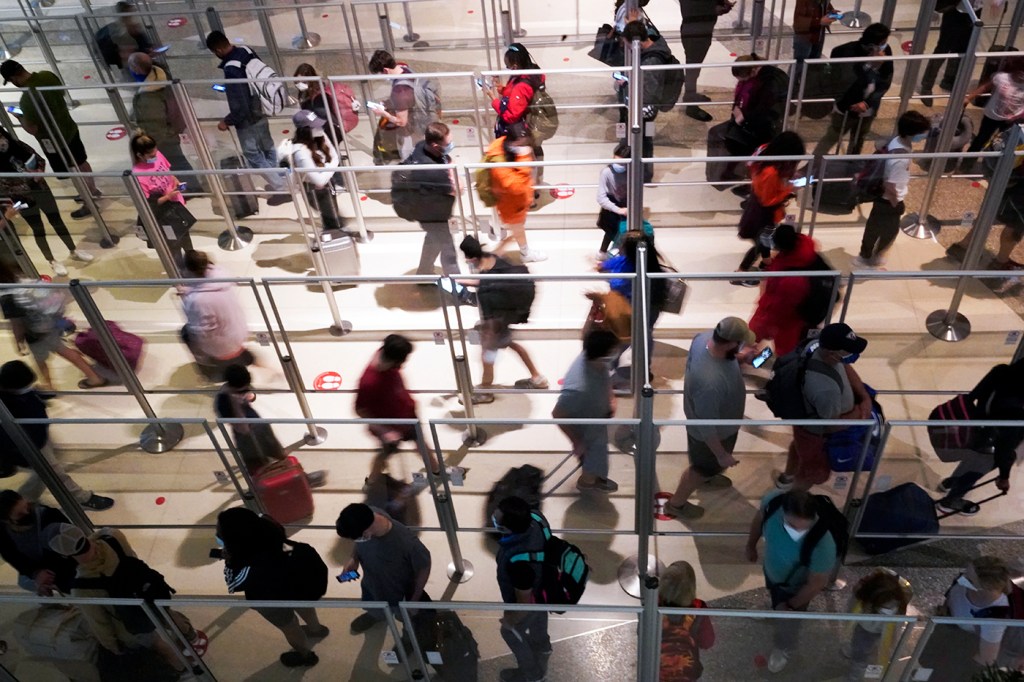If you’re planning to fly anytime soon, have a backup plan

If you’re planning to fly somewhere anytime soon, make sure you have a backup plan. Tens of thousands of flights around the United States have been canceled in recent weeks, as airlines face “a perfect storm” of challenges that aren’t going away any time soon, says Ravi Sarathy, professor of international business and strategy at Northeastern.
The compounding effects of inclement winter weather and the wildly contagious omicron variant of the coronavirus left airlines in a bind at one of the busiest times of year for travel—particularly this year. A (perhaps fleeting) sense of optimism late in 2021 among vaccinated families who had canceled gatherings in 2020 meant a crush of holiday travelers eager for flights that were canceled left and right.

Ravi Sarathy is a professor of international business and strategy in the D’Amore-McKim School of Business at Northeastern. Photo by Alyssa Stone/Northeastern University
Airlines have canceled more than 1,000 U.S. flights a day for nearly two weeks, according to FlightAware, a flight-tracking service. Between Christmas Eve and Jan. 5 alone, more than 22,000 trips—or 7 percent of the planned flights—dropped from the schedules.
“What we’re seeing is a short-term, sudden increase in demand for air travel at exactly the same time that winter storms and COVID-related staffing shortages are forcing airlines to cancel flights,” Sarathy says.
Airlines operate under strict safety rules that can leave them little recourse but to cancel flights when they are short of staff in certain jobs, The Wall Street Journal reports. Pilots aren’t always trained to fly multiple aircraft types, for example. Regulations dictate how much rest crews must get between shifts. And employees, such as flight dispatchers and mechanics, can take on only so much extra work safely.
Omicron-fueled staff shortages will likely abate soon: The surge in cases is expected to peak by mid-January, according to new projections from the Laboratory for the Modeling of Biological + Socio-technical Systems in the Network Science Institute at Northeastern. But Sarathy expects the problems for airlines will continue. New variants of the virus may still emerge, and airlines already have been financially hurt by the pandemic.
As of the third quarter of 2021, the largest domestic airlines (including Alaska, Allegiant, American, Delta, Hawaiian, JetBlue, Southwest, Spirit, and United) incurred a total $841 million in pre-tax losses this year—a figure that takes into account federal payroll support program grants, according to data from Airlines for America, a trade association that represents major airlines in North America.
Business travel, usually a reliable source of income for airlines, also has plummeted, Sarathy says. Virtual and tele-work options that expanded during the pandemic have resulted in longer-term shifts in how companies do business, and for some, it’s meant cutting back on large, in-person gatherings. While there are certain kinds of meetings that will still make sense in person (meeting with a new client for the first time, for example), business travel on the whole has declined and will likely continue to.
“Right now, airlines are not very healthy in terms of financial performance,” Sarathy says. “They’re hoping to come back in a big way, but we’re going to see a significant cutback in the meantime.”
All of this likely will mean higher fares for leisure travelers, he says, and possibly more permanent changes. “Not all airlines have been equally hurt. Will the U.S. government allow consolidation among the ones that remain?”
Sarathy sees new options for airlines to recoup losses, however, including the expansion of cargo transportation.
“The supply-chain issues aren’t just a result of transportation, but to the extent that utilizing air cargo to reduce the pressure on other forms of shipping, it may be an option,” he says. “Companies may be willing to pay higher transport rates to guarantee their goods arrive on time.”
For media inquiries, please contact Marirose Sartoretto at m.sartoretto@northeastern.edu or 617-373-5718.





